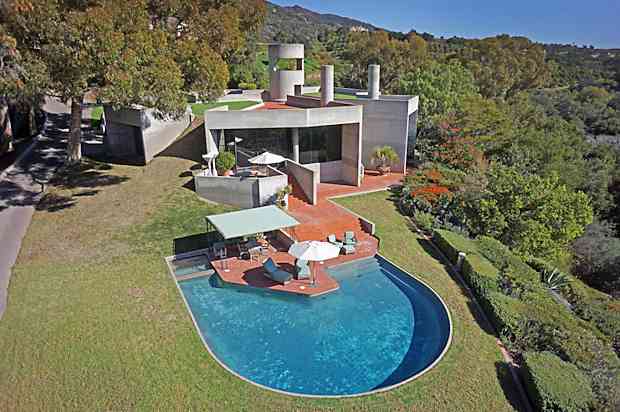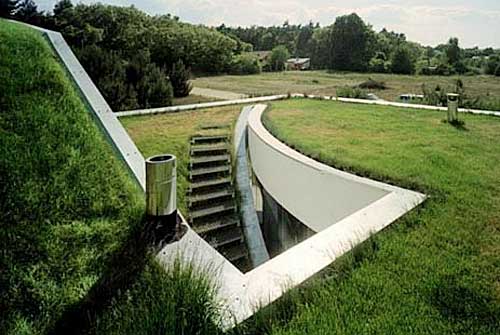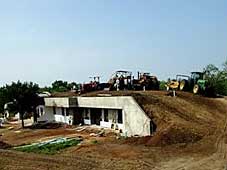Underground
Concrete Homes
As fossil fuels are depleted and those that remain become
more costly, people are naturally seeking out ways to
live that are more economical.
 Concrete for an underground home
Concrete for an underground home |
|
Eco-friendly houses like concrete underground homes provide
a safe place to live and lower heating and cooling bills,
as well.
Pouring Over the Facts ...
Homes built underground have the earth around them to
keep their temperature fairly regulated, year round. There
isn't as much of a need for heating and cooling systems.
Concrete homes are very sustainable, and they are strong
enough to withstand fires and earthquakes, which easily
devour houses above-ground. Poured concrete is stronger
for your home than wood frame or cinder block.
The design of concrete homes isn't exactly a new idea,
but it's still a largely unexplored concept in home design.
Locating your concrete home underground helps to increase
its efficiency, while still maintaining a comfortable
and attractive living area.

Steve Martin's Santa Barbara, CA Mansion
is Made Mostly of Concrete
Water You Thinking?
The earth's mass maintains the temperature in your underground
housing year round. Your habitat must be properly designed
to carry the weight of earth, and you'll need to protect
your home from the infiltration of water, both above,
around and below.
Concrete is often used in underground homes because,
when reinforced, it is strong enough to withstand the
weight of the soil on it, and it will not degrade. Domes
are one of the most popular shapes for these houses, for
proper weight distribution. As a rule, the builder will
also add insulation. Then your home will be waterproofed,
using methods like liquid polyurethane, plastic sheeting
or rubberized asphalt.

Concrete Home Underground
Some homes that are called "underground"
are actually excavated into hills, and partially buried.
This will allow you to have one side available for windows,
allowing you to use passive solar energy. But true underground
homes are below ground level, and the area around them
is filled in with dirt. Often, these houses may utilize
a courtyard in the center, to allow more light and air
to come into the home. You may also opt for sun tubes
or skylights to add more natural light.
Differently Different ...
Underground homes work differently in different climate
zones. You can still build even in areas where the temperature
fluctuates a lot from night to day, since the earth will
provide nearly the same temperature, not only for the
whole day but for the whole year. Humid climates aren't
the most ideal places for underground housing, since they
may bring on excess condensation issues for homes located
underground.

Underground Concrete Home
Have your contractor check the frost line and water table
in your area before you build. If they are very close
to the earth's surface, an underground dwelling will not
be the wisest choice. In your plans and blueprints, make
sure that all water is routed away from your home, since
water is a huge enemy of underground housing.
Your contractor will also check the soil in the area where
you would like him to build your concrete home. It must
be stable enough so that it can support your house. Gravelly
and sandy soils usually work well, but soil that contains
a high concentration of clay is not as suitable.
Written by Kevin Knatloa
First Published on November 05, 2012
Updated February 10, 2015
|